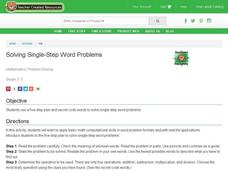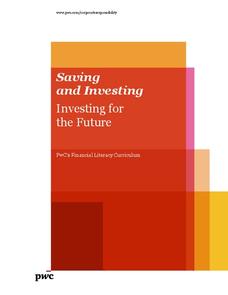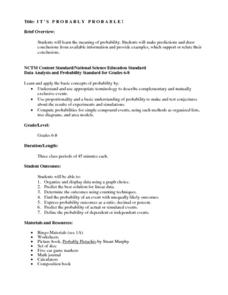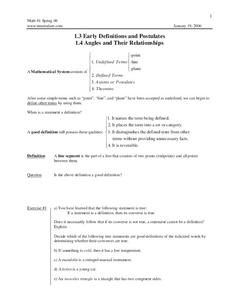Illustrative Mathematics
Equality Number Sentences
Understanding the concept of equality is fundamental to the success of young mathematicians. To explore this basic idea, children compare the dots arranged in pairs of rectangles in order to determine whether or not they contain an equal...
Super Teacher Worksheets
Number Patterns
Pattern recognition is an essential step in the development of young mathematicians fluency with the four basic operations. This simple skills practice worksheet asks children identify and complete three different numerical patterns,...
Kuta Software
Points in the Coordinate Plane
Keep young mathematicians on point with this coordinate plane worksheet. From plotting ordered pairs to identifying the quadrant and coordinates of specific points, this resource covers all the basic skills learners need to have when...
PB Works
Prime and Composite Numbers
Start with the basics and introduce the first 24 numbers in the world of prime and composites. This graphic organizer has students list the factors and then categorize the numbers appropriately. A great way to organize information and...
Mathed Up!
Circle Theorems
Explore theorems involving circles. Individuals watch a video that reviews the basic parts of a circle. They learn about circle theorems and compete a worksheet of problems that use these theorems — putting their skills to work right away!
Mathematics Vision Project
Module 9: Statistics
All disciplines use data! A seven-lesson unit teaches learners the basics of analyzing all types of data. The unit begins with a study of the shape of data displays and the analysis of a normal distribution. Later lessons discuss the...
Curated OER
Basic Vitamins: Water-Soluble and Fat-Soluble
Students examine vitamins and study their functions and food sources. They research what happens to vitamins when foods are overcooked. They prepare a microwaveable vegetable quiche.
Curated OER
Quilting With Students: Using Fractions to Develop Quilt Designs
Students create and study paper "quilt blocks" that represent fractions. In this fraction lesson, students color squares in different dimensions in order to discover the basics of fractions.
Curated OER
Tables & Data
In this problem solving worksheet, 4th graders study the data found on a table involving the number of cans collected during a fund-raiser. Students utilize the concepts of addition and subtraction to solve 8 sentence word problems.
Curated OER
Basic Skills: Unit Rates
In this unit rates activity, students determine the unit rate of given data. This three-page activity contains 20 problems. Answers are provided on the last page of the activity.
Curated OER
You Are The Farmer
Students investigate the farming business and occupations in agriculture. Basic multi-step math operations are performed in calculating some of the expenses involved in farming.
Curated OER
Ways to Make 9 and 10
Word problems are great skill builders! Here are 6 basic word problems intended to boost addition skills. Leaners work through each problem and discover various ways to make 9 and 10.
Curated OER
Solving Single-Step Word Problems
Math wizards learn the five-step plan to solve math word problems. They investigate the five-step process for solving word problems, and examine the use of code words for each of the operations and solve a problem using the strategies.
Curated OER
Digit/Symbol Cards
Pupils learn to recognize the digits from 1-10 and the four math operation signs by cutting apart the digit and symbol cards. There are no directions about what students are to do with them.
Curated OER
Matrix Multiplication
Students identify, analyze, and multiply matrices. They determine if various indicated operations are possible through classroom discussion and practice. Finally, students determine matrix product dimensions through problem-solving...
PwC Financial Literacy
Saving and Investing: Investing for the Future
A fine lesson on saving and investing is here for you and your middle schoolers. In it, learners explore the values of time and money, and discover how small amounts of money invested over time can grow into a large "pot of gold." They...
National Security Agency
It's Probably Probable
Learners make predictions and draw conclusions from given information as they learn the meaning of probability in this vocabulary-rich, integrated activity that presents a variety of teaching strategies to motivate and reach all learning...
Mt. San Antonio Collage
Postulates, Angles, and Their Relationships
More than a worksheet, learners go through geometry topics example by example on the nicely organized handout. From postulates to classifying angles, there are rules and examples provided for each topic. The ten pages of problems provide...
Curated OER
Tasty Tech Activity With Excel
Learners are introduce to basic Excel skills, rank their opinions of menu items from fast food restaurants, add their answers to the spreadsheet, and then create a simple graph of the results.
Curated OER
Earthquakes
Eighth graders demonstrate the mathematical components of a scientific problem as well as illustrate how real world problems can be solved using math. They demonstrate math skills such as rate calculation, graphing, and linear equations.
Curated OER
2, 4, 6, 8 . . .What Do We Appreciate-Patterns, Patterns, Patterns
Students discover and predict patterns in a numerical sequence. Through the Internet and video segments, students begin with basic number patterns and extend their knowledge into higher math skills. They will also create new patterns...
Curated OER
Economics and emissions
Eighth graders produce a manufactured good and monitor energy consumption. In this Math instructional activity, 8th graders practice their basic math and accounting skills. Students participate in a business simulation.
Curated OER
What's My Rule?
Second graders use a variety of problem solving and math skills while playing the "What's My Rule" game. They read "Clean Your Room, Harvey Moon" and discuss family rules and other types of rules, including numerical ones.
Curated OER
Patchwork Math
Young scholars recognize and identify shapes in their environment. They investigate why objects can be composed of several different shapes. They follow a pattern to recreate designs using various shapes.

























